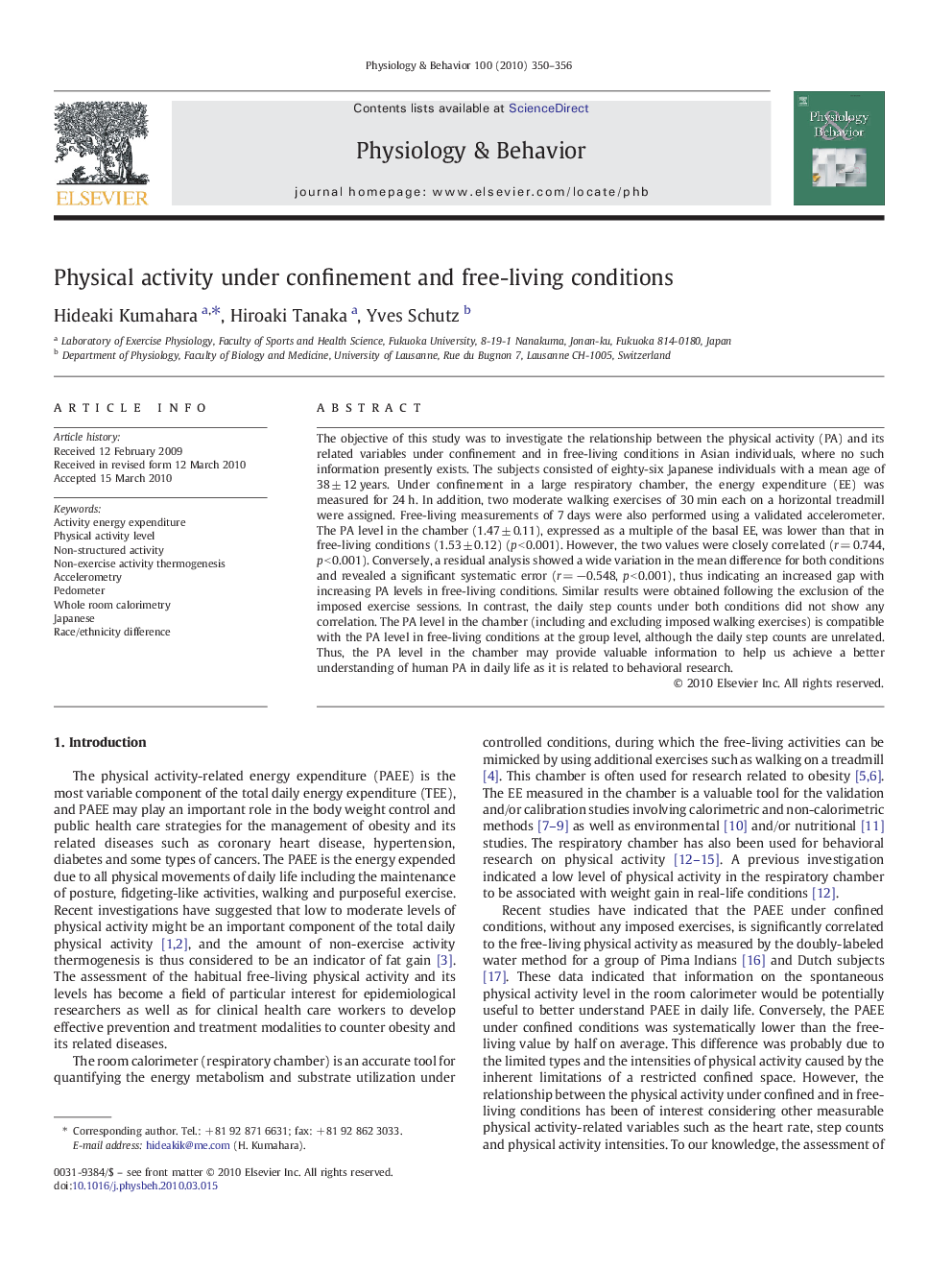| Article ID | Journal | Published Year | Pages | File Type |
|---|---|---|---|---|
| 2844935 | Physiology & Behavior | 2010 | 7 Pages |
The objective of this study was to investigate the relationship between the physical activity (PA) and its related variables under confinement and in free-living conditions in Asian individuals, where no such information presently exists. The subjects consisted of eighty-six Japanese individuals with a mean age of 38 ± 12 years. Under confinement in a large respiratory chamber, the energy expenditure (EE) was measured for 24 h. In addition, two moderate walking exercises of 30 min each on a horizontal treadmill were assigned. Free-living measurements of 7 days were also performed using a validated accelerometer. The PA level in the chamber (1.47 ± 0.11), expressed as a multiple of the basal EE, was lower than that in free-living conditions (1.53 ± 0.12) (p < 0.001). However, the two values were closely correlated (r = 0.744, p < 0.001). Conversely, a residual analysis showed a wide variation in the mean difference for both conditions and revealed a significant systematic error (r = −0.548, p < 0.001), thus indicating an increased gap with increasing PA levels in free-living conditions. Similar results were obtained following the exclusion of the imposed exercise sessions. In contrast, the daily step counts under both conditions did not show any correlation. The PA level in the chamber (including and excluding imposed walking exercises) is compatible with the PA level in free-living conditions at the group level, although the daily step counts are unrelated. Thus, the PA level in the chamber may provide valuable information to help us achieve a better understanding of human PA in daily life as it is related to behavioral research.
